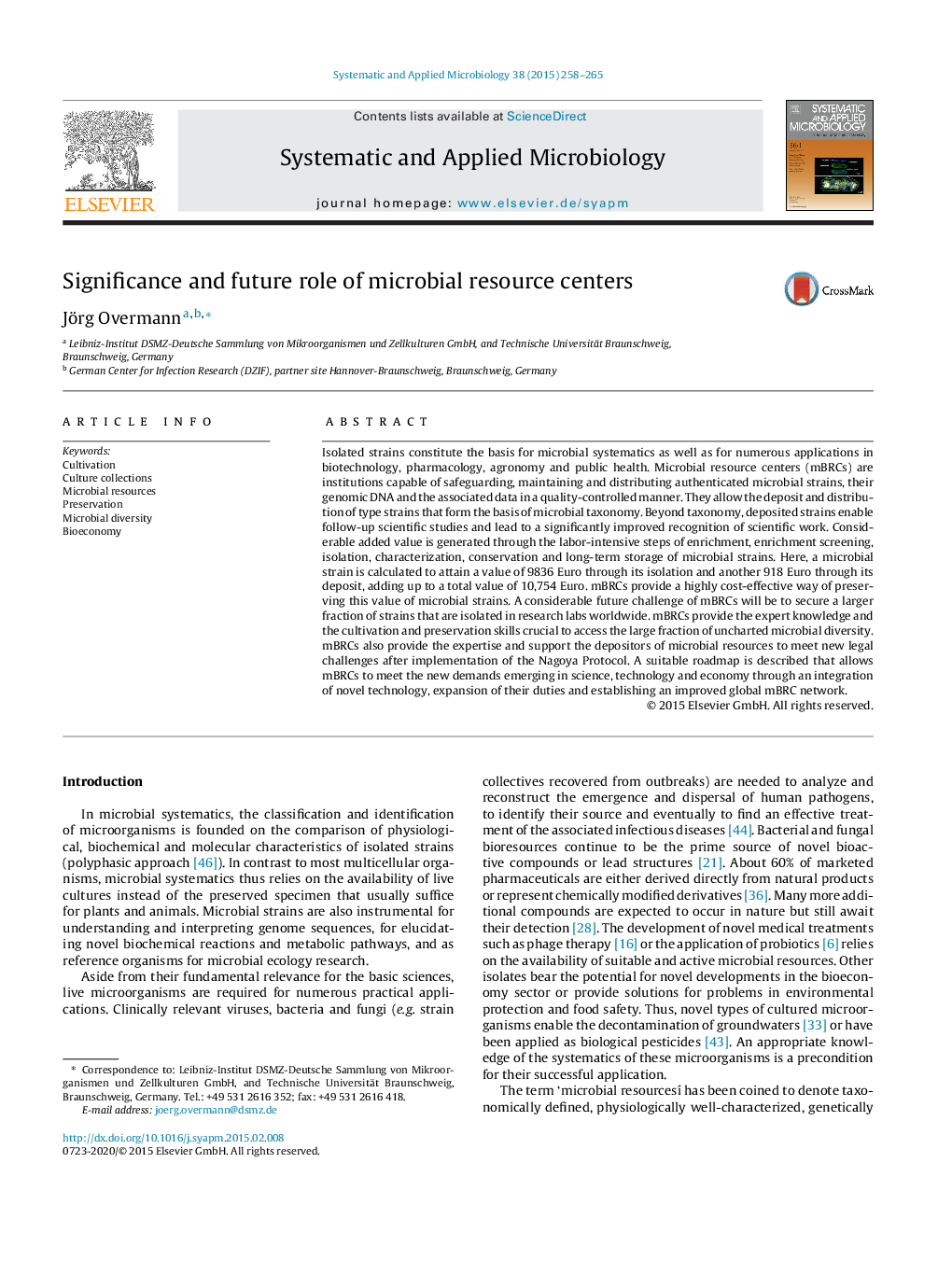| Article ID | Journal | Published Year | Pages | File Type |
|---|---|---|---|---|
| 2062969 | Systematic and Applied Microbiology | 2015 | 8 Pages |
Isolated strains constitute the basis for microbial systematics as well as for numerous applications in biotechnology, pharmacology, agronomy and public health. Microbial resource centers (mBRCs) are institutions capable of safeguarding, maintaining and distributing authenticated microbial strains, their genomic DNA and the associated data in a quality-controlled manner. They allow the deposit and distribution of type strains that form the basis of microbial taxonomy. Beyond taxonomy, deposited strains enable follow-up scientific studies and lead to a significantly improved recognition of scientific work. Considerable added value is generated through the labor-intensive steps of enrichment, enrichment screening, isolation, characterization, conservation and long-term storage of microbial strains. Here, a microbial strain is calculated to attain a value of 9836 Euro through its isolation and another 918 Euro through its deposit, adding up to a total value of 10,754 Euro. mBRCs provide a highly cost-effective way of preserving this value of microbial strains. A considerable future challenge of mBRCs will be to secure a larger fraction of strains that are isolated in research labs worldwide. mBRCs provide the expert knowledge and the cultivation and preservation skills crucial to access the large fraction of uncharted microbial diversity. mBRCs also provide the expertise and support the depositors of microbial resources to meet new legal challenges after implementation of the Nagoya Protocol. A suitable roadmap is described that allows mBRCs to meet the new demands emerging in science, technology and economy through an integration of novel technology, expansion of their duties and establishing an improved global mBRC network.
